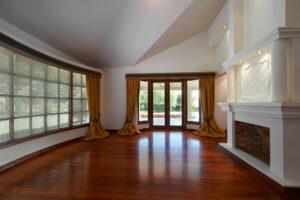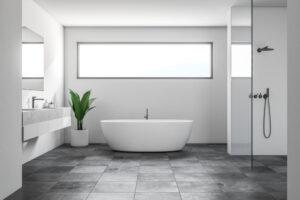What Are the Best Flooring Options?
Great. You’re starting with the right question. It’s time to choose your flooring and we’re glad you’re doing a bit of research. Flooring can be one of the most challenging and important choices you can make when it comes to your home. So, what are the best flooring options for you?
There are many options available, so there are several things to consider. Where you want the flooring and what sort of use can be expected? Who will be installing the flooring and what kind of surface preparation or subfloor requirements will be needed? How large a floor space is involved and how much money & time are you planning to spend?
Finally, you’ll want to answer the question of the overall look and feel that you’re going for.
Whew. And even when you think you’ve considered everything, there’s always a surprise or two waiting in the wings.
The good news is once you’re done, you can end up with a floor that you can be proud of and a floor that adds value to your home. So follow along and take your time reviewing your options. By the end of this article, you should have a pretty good overview of what’s available and a better idea of which direction is right for you.
Where Do I Start?

When considering the best flooring options, an obvious place to start is time and money. But here’s why you might want to hold off on that for a bit. As we’ve mentioned, choosing flooring materials can be complicated.
So, what many people do is default to the budget because comparing options based on how much they cost is something we’re used to doing. It’s just easier to compare price than it is quality, durability, performance, and long-term satisfaction, especially when there are different materials and technologies to be evaluated.
The Best Flooring Options Over the Long Run
The thing is, if your home is really important to you, the flooring you choose can make a huge difference. In the long run, what may sound like a lot of money between an option like solid hardwood floors and laminate flooring might be more than worth it. Day after day, year after year, and compliment after compliment might make the one choice that seemed initially too expensive, a great bargain after all.
Types of Flooring Materials
Broadloom Carpet and Tiles
Many new homes feature broadloom carpet, especially in the bedrooms. Broadloom comes in 12 foot widths and is installed wall to wall with no visible seam in larger rooms. Most applications will require the installation of a carpet pad underneath that promotes durability and comfort.
Carpet tiles are an excellent choice in areas where spills and heavy traffic might warrant changing out limited areas. This can be accomplished quickly and easily by the homeowner in most situations. Carpet pads are optional.

Advantages
– Priced for every budget – carpet options range from low cost to high-end natural fibers like wool
– Warm to the touch, especially in colder climates
– Comfort underfoot, especially when walking around without shoes
– Available with different levels of stain resistance
– Short nap lengths are easy to vacuum
– Wide variety of colors, designs, and textures
– Resists sound transfer from room to room and other floors
– Easy to install and many installations can be completed in less than a day
Disadvantages
– Although comfortable for young children and pets, not ideal because of possible staining/discoloration from repeated spills or pet accidents.
– Carpet fibers can absorb odors
– Sediment can collect amidst fibers and underneath
– Professional installation is highly recommended, especially with larger areas and rooms
– Not recommended for high moisture areas like bathrooms, kitchens, and mudrooms
– Professional carpet cleaning is recommended at least once per year
Vinyl flooring
This is not the sheet flooring, known as linoleum, from the good old days. Instead, today’s vinyl flooring choices deliver excellent performance and a wide variety of different formats, colors, textures, and sheen. In addition, technological advances have been adopted to make the floors easier to install, look better, and last longer.
Advantages
– Priced at the lower end of the scale
– Depending on project size, great for the do-it-yourselfer
– Installation is quick
– Can mimic wood floor, ceramic, porcelain, and natural stone
– Comes in a variety of different sizes, especially vinyl plank
– Performs well in high moisture and high traffic areas
– Very easy to keep clean
Disadvantages
– Despite its durability and performance, vinyl flooring is thought of as lower end
– Less likely to add value to your home because of dated opinions
– Recent technological advances not widely known
Wood floor
You can choose from many wood varieties, finishes, and stain colors. Different wood species come with different hardness levels, grain patterns, and colors. The most common choices are white oak, red oak, and maple.
You can also venture into more exotic species, like cherry, walnut, and even some South American species. Then it depends on what sort of finish or gloss you prefer. Ultra-high gloss finishes can look amazing, but one scratch can ruin your day.
You can opt for a solid hardwood that is unfinished and ¾ inch thick. Or you can choose one of the engineered hardwoods that come prefinished in a variety of different textures and “distress levels.”

Advantages
– Traditional favorite
– Widely accepted visual appeal
– Usually adds value to your home
– Can last for decades
– Some choices can be refinished if necessary
– Stable construction and warm underfoot
– Simple to keep clean
Disadvantages
– Depending on traffic type, scrapes, dents, and scratches can occur
– Wide variety of prices, although mainly at the higher end of the scale, compared to other floor types
– Professional installation is usually recommended
Laminate flooring
You can choose from laminate wood flooring, oak laminate flooring, and a wide variety of other choices. Laminate flooring is considered a “floating floor .”This means the planks are attached to each other and not the subfloor. Once installed, it acts as one continuous floor.
Advantages
Installing laminate flooring is simple. Do-it-yourselfers can click the planks together. No gluing is necessary.
Costs less than hardwood flooring
Mimics a wide variety of natural wood colors and grain patterns
Good durability
Suitable for areas with a lot of foot traffic
Multiple levels of durability and quality
Disadvantages
Prolonged exposure to moisture can cause damage.
If damaged, replacement of individual pieces can be difficult
Discouraged in high moisture areas like kitchens and bathrooms
Natural Stone Flooring
A perennial favorite all over the world, natural stones like marble, travertine, granite, sandstone, and slate are timeless in appeal and durability with proper care.
Advantages
Long-lasting
Ideally suited for underfloor radiant heating
An almost infinite number of colors, shapes, styles, and installations
Easy to keep clean
Works well with small children and pets
Will add value to your home
Disadvantages
Can be high cost depending on flooring choices and flooring manufacturers
Professional installation is required and can be costly
Depending on variety of stone, can be porous and require polishing
Expensive to repair

Ceramic Tile and Porcelain
Both ceramic and porcelain tiles are often confused with natural stone. It’s easy to see why — a ceramic or porcelain tile floor can exactly mimic natural stone in appearance. It’s worth spending a little more time investigating both of these choices for two reasons; they come in all kinds of varieties that can fit just about any budget and ceramic & porcelain tile combine the best attributes of natural stone with superior durability.
Advantages
Looks and designs come in an endless variety and can even mimic natural wood in appearance
Highly durable
Suitable for high moisture areas
Can be impervious to staining
Can be suitable for indoor/outdoor applications
Disadvantages
Difficult to install for the do-it-yourselfer depending on type of flooring
Substrate or subfloor must be properly prepared
Cost
Take Your Time
Who knew choosing a floor could be so complicated? Take your time to review the best flooring options that are currently available.
If you’re pressed for time and or you’d prefer some expert advice, look for a long-standing, local flooring expert to help guide you. They’ll show you the ropes between different types of flooring and the different manufacturers available. You’re on your way to making your home more beautiful.


